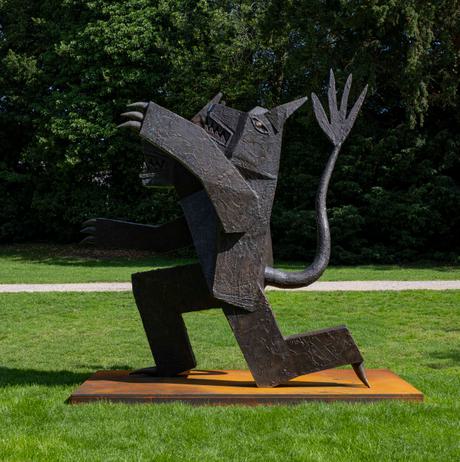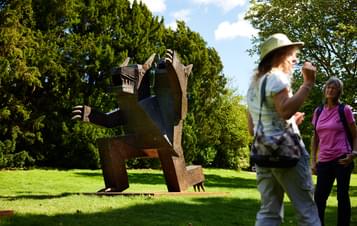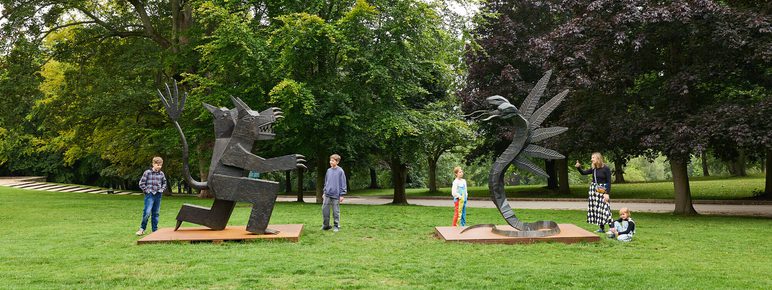
Jordy Kerwick: Hydra vs Bear
Art Outdoors /Jordy Kerwick: Hydra vs Bear
Hydra vs Bear depicts a battle between the gigantic water serpent from Greek mythology and a double-headed bear. Cast in bronze, the two beasts are poised mid-attack: Hydra rises from the ground ready to strike, while Bear lunges forward with claws and teeth bared. Sited on the Bothy Triangle at YSP, the works reflect Kerwick’s curious and playful approach to making.
Wolves, tigers, cobras, bears and unicorns all feature in Kerwick’s sculptures and paintings, along with hybrid and strange creatures. These animals are the subject of some of the earliest cave paintings, dating from the Palaeolithic era. The artist draws on these archetypes and ancestral memories. His monsters and many-headed creatures also hint at contemporary fears: the consequences of genetic engineering or the fallout from nuclear conflict.
I've always been a fan of storytelling and have been inspired by how writers create narratives. Folklore is the traditional way of telling stories, relying on distinctive characters and symbolism to tell tales of good and evil, life and death, and fear and bravery. In that sense, my work leans on those folkloric characteristics.
- Jordy Kerwick
About the artist
Jordy Kerwick (b. 1982, Melbourne, Australia) lives and works in Albi, France. He is a self-taught artist, taking up painting in 2016, and has exhibited extensively internationally. His paintings and sculptures are held in numerous public and private collections. Merging mythical creatures with human forms, flowers and landscapes, Kerwick’s imaginative work challenges the normal constraints of both adulthood and the artworld.
You may also like
- News

Jordy Kerwick: Hydra vs Bear coming soon
5 June 2023 
Jordy Kerwick: One to Give. One to Take Away
–Jordy Kerwick’s fantastical creatures come to life in sculpture and paintings in The Weston Gallery and outdoors.- News
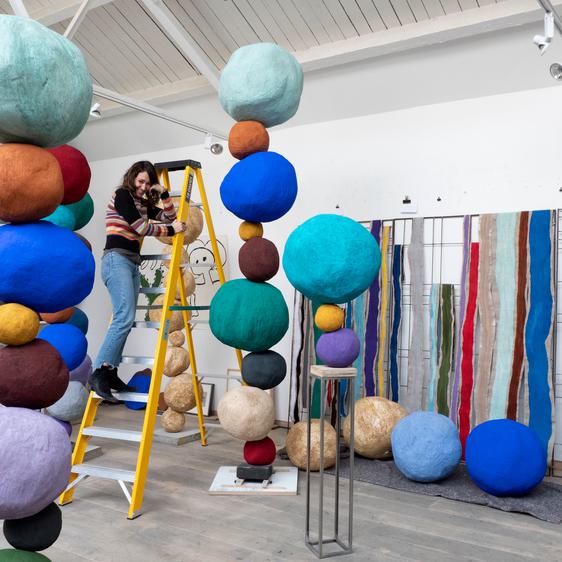
Major new public sculptures announced for Wakefield city centre
24 November 2022 - Event
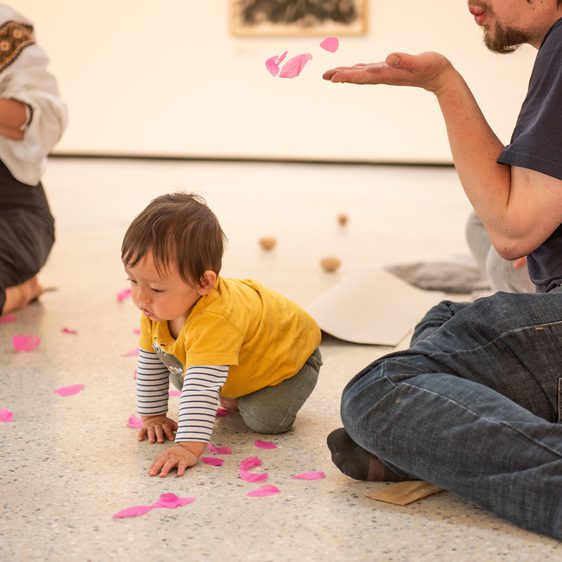
Sculpture Baby: Jordy Kerwick
–Spend creative time with your baby and enjoy this sensory session inspired by Jordy Kerwick's One to Give. One to Take Away exhibition at The Weston.
